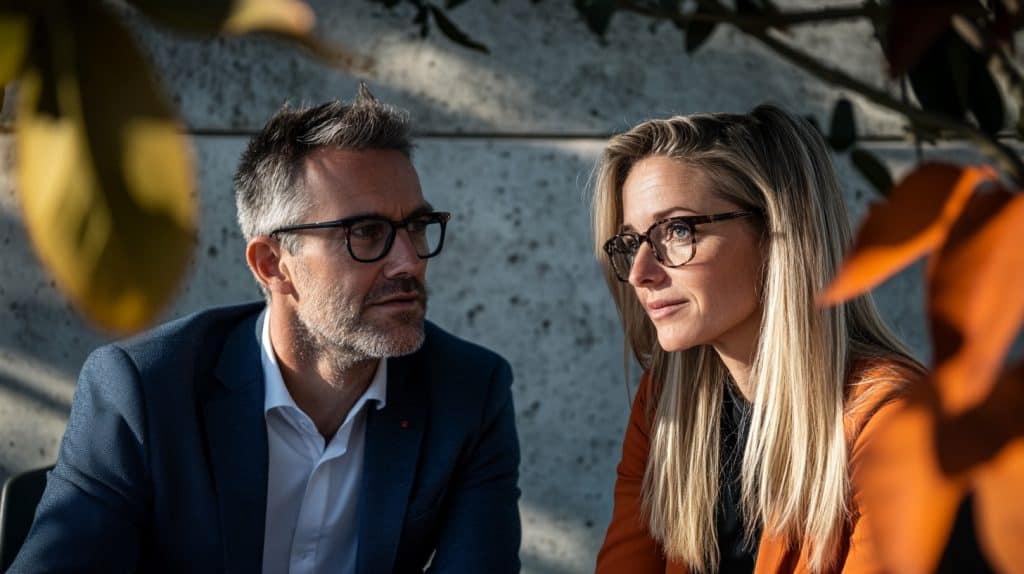Introduction
In today’s business landscape, change is a constant. Organizations must navigate market dynamics, technological advancements, and global disruptions while maintaining resilience and agility. The ability to adapt to rapidly changing environments is not just a competitive advantage but a necessity for survival. This article delves into the common challenges faced by organizations in such environments, strategies for overcoming these hurdles, and the role of leadership in fostering adaptability. Drawing from expert interviews and real-world insights, this article aims to equip readers with actionable strategies to thrive in an era of constant change.
Common challenges in rapidly changing environments
Rapid change often tests an organization’s structure, governança, and culture. One of the most pressing challenges is maintaining alignment between strategy and execution. Olá Virginie notas, “Decisions disconnected from on-the-ground realities lead to key talent departures and operational inefficiencies.” This misalignment is particularly pronounced in organizations with rigid hierarchies or slow decision-making processes.
Another challenge is managing the human element during change. Aarthi Scott destaques, "Periods of significant change often create uncertainty, and if not addressed, this uncertainty can lead to disengagement and resistance.” Employees may struggle to adapt to new roles, technologies, or ways of working, resulting in decreased productivity and morale.
Technological disruptions also pose unique challenges. Organizations must balance the adoption of new technologies with the risk of alienating employees who may lack the skills or confidence to embrace them. Jean-Christophe Simon mentions, “Introducing new tools without sufficient training or communication often creates more problems than it solves.”
Agility requires more than just speed – it demands the ability to make informed decisions without delay at every level of the organization. Companies that decentralise decision-making and enable teams to act quickly can maintain strategic alignment while adapting to market shifts.
Strategies for overcoming challenges
To navigate these challenges, organizations must adopt a multi-faceted approach that combines strategic foresight with employee engagement and operational agility. Key strategies include:
- Promoting agility in decision-making: organizations should streamline processes to enable faster responses to changing conditions. Virginie aconselha, “Empowering teams with decision-making authority creates a more agile organization that can adapt quickly to shifts in the market.”
- Strengthening strategic alignment: Ensuring that governance structures reflect operational realities is critical. Anika Concessão shares, “Leaders must prioritize transparent communication to align teams with the organization’s overarching goals, especially during periods of uncertainty.”
- Investing in continuous learning: Training programs and upskilling initiatives help employees adapt to new technologies and processes. Aarthi afirma, “Encouraging continuous learning reduces resistance to change and equips teams with the tools they need to thrive.”
- Fostering collaboration across functions: Breaking down silos and encouraging cross-functional collaboration enables organizations to respond more effectively to complex challenges. Olivier Prestel remarks, “Cross-functional teams bring a range of perspectives to the table, fostering innovation and adaptability.”
- Building resilience through scenario planning: organizations that anticipate potential disruptions and develop contingency plans are better positioned to navigate change. Philippe Gilet notas, “Resilience comes from preparation; organizations that plan for multiple scenarios can pivot faster when challenges arise.”
Agility is built on trust, empowerment, and customer awareness. organizations that listen closely to customer needs and allow their teams to take ownership of decisions will not only react faster but also stay ahead of change. Leaders should prioritize bold, innovative individuals who take responsibility for their choices and adjust rapidly when needed.
The role of leadership in driving adaptability
Leadership plays a central role in helping organizations navigate change. Effective leaders inspire trust, model adaptability, and create an environment where teams feel empowered to take risks and innovate. Anika emphasises, “Leaders who demonstrate resilience and transparency during uncertain times build confidence and stability within their teams.”
Filipe acrescenta, “Leadership isn’t just about making decisions; it’s about guiding teams through uncertainty with clarity and purpose.” For leaders, fostering an environment of trust enables teams to navigate change more effectively.
Strong leadership goes beyond merely communicating a vision. It involves creating an environment where adaptability becomes second nature. Leaders must set clear directions, articulate the reasoning behind decisions, and empower teams to act with confidence, even in uncertainty.
One practical approach is adopting change management frameworks, such as Kotter’s 8-Step Model, which provides a structured approach to driving transformation. However, tools and frameworks must be adapted to the organization’s unique context to be truly effective.
Navigating rapidly changing environments requires a blend of strategic foresight, operational agility, and human-centred leadership. By fostering a culture of adaptability and resilience, organizations can turn challenges into opportunities for growth and innovation.
Agility is not just about speed. It’s about the decisions that are made at the right levels, in real time, with a clear connection to strategic goals. A company that embeds adaptability into its DNA will not only survive but thrive in uncertain times.
Even the most adaptable organizations rely on one crucial element to sustain long-term success: their teams. Agility extends beyond leadership choices. It depends on building teams that can scale effectively, collaborate seamlessly, and remain resilient in the face of change. In the next article, we explore what makes a team truly scalable, how to balance diverse skills and perspectives, and the key strategies to ensure teams can grow alongside the organization.
Conheça os especialistas:
Esses artigos apresentam insights de seis líderes do setor com profunda experiência em liderança, estratégia organizacional, inovação e gestão de talentos. Suas experiências em vários setores — de gigantes da tecnologia a private equity, venture building e deep-tech — trazem perspectivas valiosas sobre como escalar organizações, construir equipes de alto desempenho e navegar por desafios de liderança.
Os insights compartilhados neste artigo refletem as experiências e perspectivas pessoais dos colaboradores. Eles não representam a posição oficial de nenhuma empresa ou organização.
Virginie Hello – COO e Venture Builder
Virginie Hello is an entrepreneurial leader specialising in venture building, leadership strategy, and business transformation. As COO of Rainmaking APAC, she has led corporate innovation initiatives and helped scale startups internationally. Her expertise includes talent management, leadership team structuring, and cultural transformation in high-growth environments.
Aarthi Scott – Growth, Innovation and Business Transformation Leader
Aarthi Scott é uma líder executiva em transformação de negócios, sucesso do cliente e planejamento estratégico. Atualmente Managing Director no Google, ela construiu uma carreira focada em liderança multifuncional, crescimento de negócios em larga escala e alinhamento executivo. Sua expertise abrange inovação centrada no cliente, liderança operacional e desenvolvimento de liderança em organizações globais.
Jean-Christophe Simon – Estrategista de Liderança Executiva e Inovação
Jean-Christophe Simon é um experiente executivo e estrategista de inovação com uma carreira que abrange corporações multinacionais, capital de risco e startups de tecnologia profunda. Ele ocupou cargos de diretoria e diretoria em fusões e aquisições, P&D e estratégia corporativa, incluindo no Groupe SEB, Nikon e Essilor. Ele agora aconselha empresas sobre alinhamento de liderança, inovação e dimensionamento de equipes de alto desempenho.
Anika Grant – CHRO e Consultora Estratégica de RH
Anika Grant is a global HR leader and transformation expert with over 25 years of experience. She has led major organizational and cultural change initiatives at Uber, Dyson, and Ubisoft, where she was Chief People Officer. She specialises in leadership development, workforce transformation, and cultural evolution in high-growth environments. She now advises companies on HR strategy, talent retention, and leadership alignment.
Olivier Prestel – CEO e especialista em gestão de mudanças
Olivier Prestel é um CEO experiente e especialista em transformação com uma sólida experiência internacional, tendo vivido e trabalhado na Europa, Ásia e EUA. Ele liderou equipes multiculturais e transfronteiriças e gerenciou empresas internacionais navegando em transições de mercado complexas. Sua expertise está em gestão de mudanças, resiliência organizacional e desenvolvimento de equipes de liderança, ajudando empresas a escalar de forma eficiente, mantendo a agilidade em ambientes globais dinâmicos.
Philippe Gilet – CTO e especialista em desenvolvimento de liderança
Philippe Gilet is a technology leader and manager coach with deep expertise in strategic leadership assessment, Team development, and corporate innovation. As CTO & co-founder of Aledia, he has led groundbreaking R&D initiatives. His work focuses on identifying and developing leadership potential, guiding managers in scaling organizations, and ensuring strategic alignment.

















